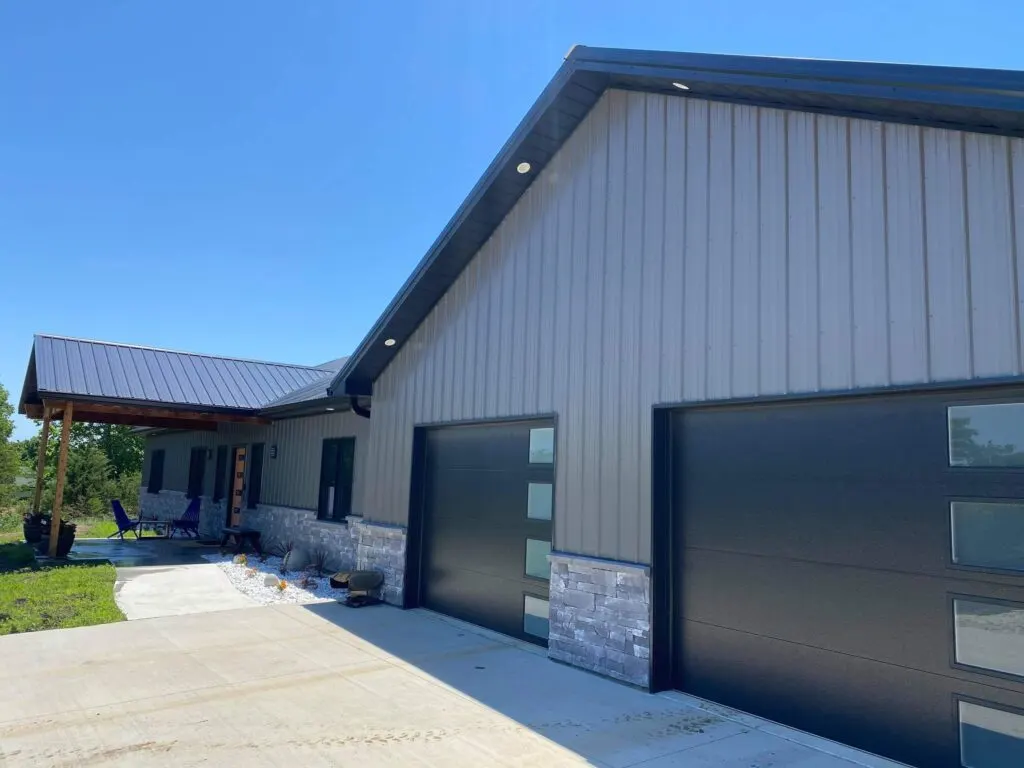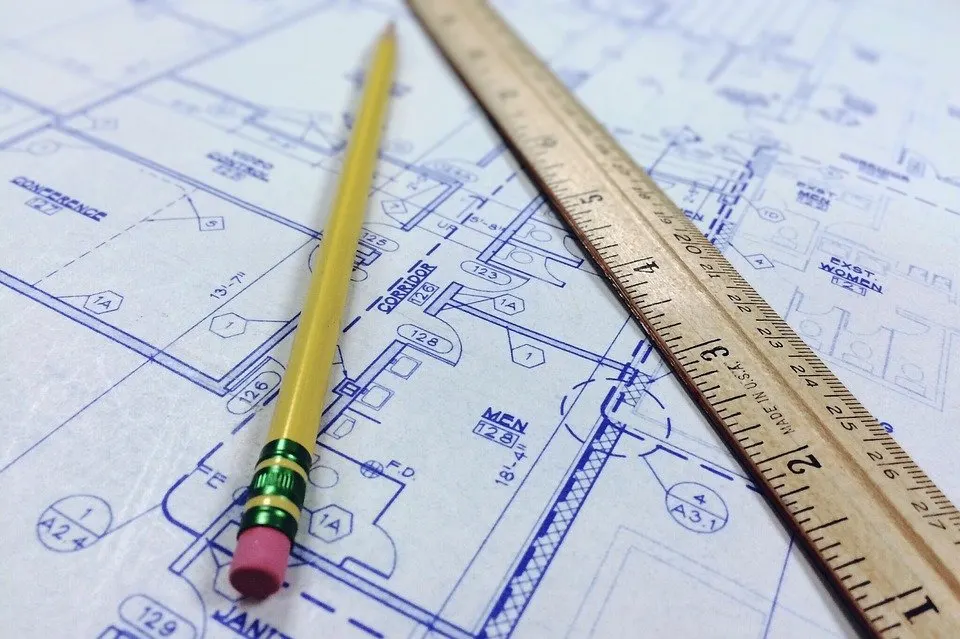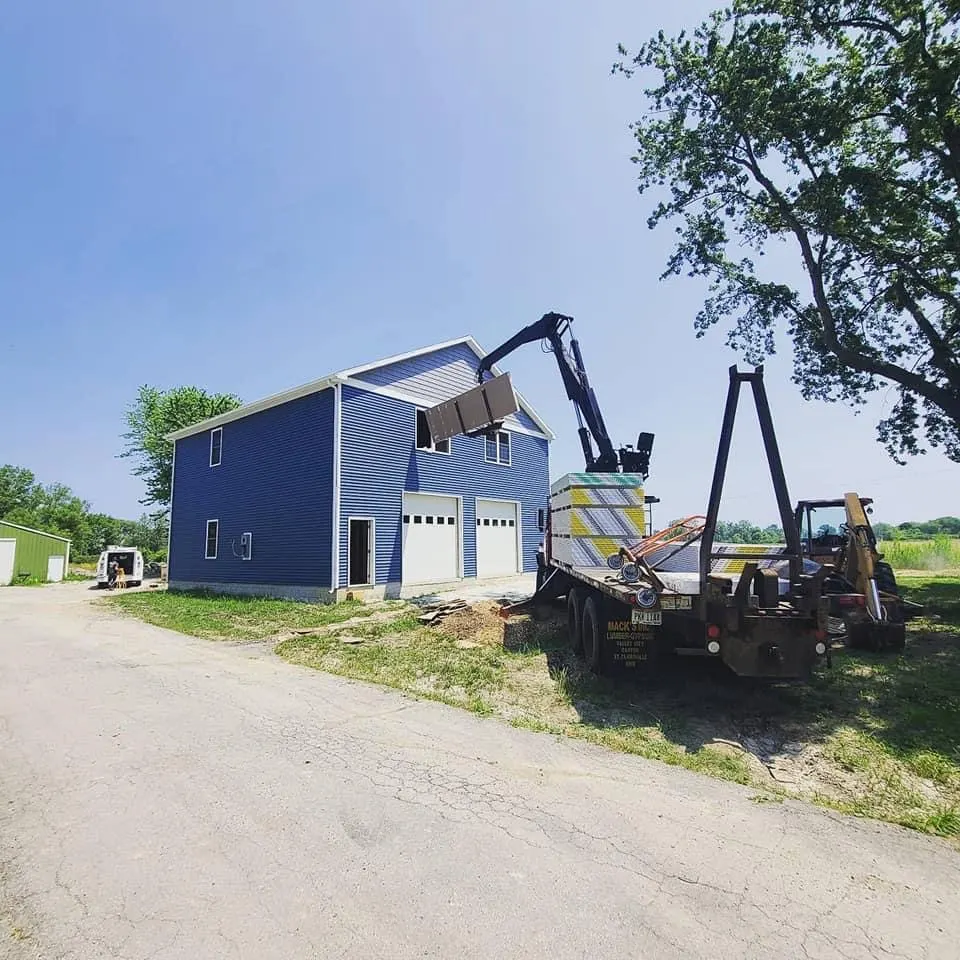
A shouse is a great alternative to a standard home, as it tends to cost less to build and offers plenty of space for work and hobbies. Unfortunately, financing the construction of a shouse is not always easy.
Not all lenders are familiar with the concept of a shouse, increasing the challenges of obtaining a construction loan. You also need to ensure that you provide a detailed construction plan, find the right land, and choose a qualified builder.
To start planning the construction of your new home, this is your shouse financing ultimate guide.
Page Contents
What Is a Shouse?
A shouse is a shop house (shop + house = shouse). The concept dates back hundreds of years. Blacksmiths and other tradespeople often built workshops off their homes so they can work and live in one location.
Modern shouses are often built using post-frame construction, which is the same type of framing used for barns, warehouses, and other large commercial and industrial structures. The unique features of a shouse are part of the reason why obtaining financing is difficult.
Preparing for a Shouse Construction Loan: Find Out More From the Shouse Financing Ultimate Guide
You cannot walk into a bank and get a construction loan without providing thorough plans and blueprints. Lenders want to protect their interests. If you fail to repay the loan, the lender may need to sell your property to avoid financial losses.
Lenders may view a shouse as a risky investment, due to the fear of selling the property for less than its initial value. The more information that you provide, the better your chances of having an application approved. Blueprints, appraisals, and other details help the lender assess the potential costs and risks.
In this shouse financing ultimate guide, note these steps involved in preparing for a loan application:
- Estimate your budget
- Find blueprints or hire an architect
- Select contractors and subcontractors
- Receive a third-party appraisal of your plans
- Decide on the type of loan for your shouse
- Compare multiple lenders
Along with these steps, you may choose to buy land before applying for a loan. Building on already purchased land is not a requirement but may help with the loan application process. Building on land that you already own gives lenders more security, as you can use the land as collateral. This may help you qualify for a higher loan amount, lower down payment, or lower interest rate.
1. Estimate Your Budget

Before you start planning and spending money on blueprints, determine how much you can afford. The amount that you can borrow largely depends on your debt-to-income ratio. Most lenders prefer a front-end debt-to-income ratio of 28% or less. The ratio is based on your total housing costs compared to your monthly income.
If your household brings home $2000 per month, your mortgage payments should not exceed $560 per month (28% of $2000 = $560). In this situation, lenders would unlikely approve a loan that results in mortgage payments that exceed $560 per month.
After determining your maximum payments, you can use a mortgage calculator to estimate how big of a loan you can get approved for. For example, a $125,000 30-year mortgage with a 3.5% interest rate would result in mortgage payments of $561 per month.
Your debt-to-income ratio is just one of the factors that lenders use when reviewing a loan application. They also look at your credit score and credit history. If you have bad credit or poor credit history, lenders may charge a higher interest rate, which reduces the amount that you may qualify for.
How Much Do You Need for a Down Payment?
Lenders typically want a down payment of 20%. If you want to get approved for a $125,000 loan, you should have about $25,000 saved up for a down payment. The down payment that you provide influences the terms of the loan. For example, if you can only provide a down payment of 15%, lenders may still approve the loan with a higher interest rate.
You can also explore alternative lending options for low or no down payment loans, such as an FHA construction loan or a VA construction loan.
2. Find Blueprints or Hire an Architect

You need blueprints to get a construction loan. The blueprints are used to create supply lists and estimate costs. You can hire an architect to draft original plans for your shouse or purchase premade blueprints. Hiring an architect increases the cost of the project but allows you to build a shouse that meets your specific needs.
You can also buy shouse blueprints online. The blueprints may include a list of materials and supplies, making it easier to estimate costs for a DIY construction process.

3. Select Contractors and Subcontractors
Unless you have professional experience in home construction, you should consider hiring a contractor or building company to manage your project. Lenders may hesitate to approve construction loans for those acting as owner-contractors.
Contractors give lenders confidence that the property will be properly built and comply with all necessary building codes and regulations. Contractors also obtain estimates from the various subcontractors needed to build your shouse.
For example, you will likely need to hire plumbers and electricians. Some builders may also subcontract parts of the construction process, such as roofing, siding, or drywalling. Working with a contractor or a building company can also help with the previous step.
Many building companies have blueprints or in-house architects. You can choose from various designs and floorplans provided by the builder instead of shopping around for blueprints online or hiring a third-party architect.
If you decide to build the shouse yourself, you may need to include a comprehensive list of materials and supplies for your construction plans. Materials and supplies lists make it easier for appraisers to provide accurate appraisals of blueprints. If you work with a contractor, they should handle the lists and work with the appraiser to determine the cost of the project.
4. Receive a Third-Party Appraisal of Your Plans

Lenders often require an appraisal of your plans. The appraisal provides an accurate estimate of the costs to ensure that the construction loan will cover everything.
Most shouses are metal buildings with living quarters, which costs less to construct compared to a home with standard wood framing. Traditional stud frame homes cost about $100 to $200 per square foot to build from scratch.
The average cost of construction for a metal building is about $10 to $25 per square foot for the frame, walls, roof, and basic plumbing and electrical work. When adding amenities needed for living quarters, such as a kitchen and bathrooms, you may spend up to $40 per square foot.
5. Decide on the Type of Loan for Your Shouse
Barndominium Financing Request
If you are building a shouse from the ground up, you will likely need a construction loan or a construction-to-permanent loan. As the name implies, construction loans cover the cost of construction. Instead of providing a lump sum, the lender doles out payments for each stage of the construction process. When the construction is complete, you obtain a mortgage to repay the construction loan.
A construction-to-permanent loan works in the same way. However, when the construction is complete, the construction loan is automatically converted into a mortgage.
Construction-to-permanent loans are the preferred choice for residential construction projects, whether you plan to build a shouse or a traditional single-family home. Lenders feel more secure with this type of loan compared to approving a stand-alone construction loan, as the construction is covered by a mortgage upon completion.
Most lenders prefer a credit score of 640 or higher for conventional loans, including standard construction loans and construction-to-permanent loans. If you have poor credit, you may need to consider applying for an FHA construction loan or a VA construction loan.
FHA Construction Loans for Shouses
With an FHA construction loan, you only need a credit score of 500 and a 10% down payment. However, it includes additional requirements, including the need to own the land that you plan to build on before applying.
You cannot get an FHA loan if the land is near an airport, gas well, or oil well. The government also prohibits FHA construction loans for land located in areas that are prone to flooding.
FHA guidelines also require you to work with a licensed builder or contractor. You cannot act as an owner-contractor unless you are licensed and insured.
FHA loans are not offered through a specific lender or entity. You apply for an FHA loan through third-party lenders, such as banks and farm credit bureaus. However, not all financial institutions offer FHA loans.
If you anticipate the need for an FHA loan due to poor credit or a smaller down payment, you may need to shop around to find lenders that offer these types of loans.

VA Construction Loans for Shouses
A VA construction loan is comparable to an FHA construction loan. VA loans are not provided by the Department of Veteran Affairs. As with FHA loans, VA loans are offered by financial institutions through a government program.
The main advantage of a VA construction loan is the down payment. Depending on your income level, you may qualify for a 0% down payment. VA loans also allow you to include the purchase price of the land that you want to build on. You do not need to already own land.
6. Compare Multiple Lenders
As mentioned, some lenders may be less likely to approve a construction loan for a shouse. You may need to compare multiple lenders and inquire about the types of loans that they offer.
Lenders can be divided into several categories, including:
- Banks and credit unions
- Mortgage brokers
- Farm credit bureaus
- Specialty lenders
Banks and credit unions may approve a construction loan or facilitate an FHA loan or VA loan but are less likely to have experience with shouse projects. They may view the project as risky and charge higher interest rates. Banks may also include extra requirements, such as working with a licensed contractor and providing a minimum down payment.
Mortgage brokers sell loan products from multiple financial institutions. They help clients receive the best value and compare lenders. However, mortgage brokers also charge a fee for their services, which is typically covered by the loan.
Farm credit bureaus have become the go-to source for loans for constructing metal buildings. The popularity of barndominiums and shouses in rural areas means that many farm credit bureaus have approved similar loans in the past. They have experience with these types of projects, increasing your chances of getting approved.
You can also try to obtain a loan from a specialty lender. Specialty lenders are financial institutions that specialize in offering loan products for specific projects. For example, some lenders specialize in loans for metal buildings or buildings with post-frame construction, which includes barndominiums and shouses.
You should also consider comparing lenders before accepting a loan. As with obtaining bids for home renovations projects, you should compare at least three lenders to ensure that you are getting the best value.

How Long Does It Take to Build a Shouse?
Depending on the lender and the type of loan, you may start construction as early as possible. For example, lenders that approve VA loans and FHA loans typically want construction to start immediately.
After you break ground on the foundation of the property, it should take between five and seven months to complete construction on your shouse.
Summary: Shouse Financing Ultimate Guide
Getting financing to build a shouse involves more work compared to applying for a mortgage. In most cases, you will need a construction-to-permanent loan. You need to plan the entire project, including selecting blueprints, hiring a contractor, and getting an appraisal before applying for the loan.
If you get a construction loan, the lender will release funds as needed to cover each stage of construction. You may also need to provide the lender with updates throughout the construction process before they release additional funds.
If lenders turn down your application, try holding off on your construction plans while you save more for a down payment. Providing a larger down payment may increase your chances of getting approved by reducing the amount that you need to borrow to build your dream shouse.
We hope to have filled you in all more about shouses from this shouse financing ultimate guide.
Gail currently spends her free time geeking out about what’s new and trending in the world of barndominiums.
She is the former executive editor of BarndominiumLife.com and loves working with the team and members of the barndominium community. She now contributes to the blog on occasion, but only when she feels like it!
